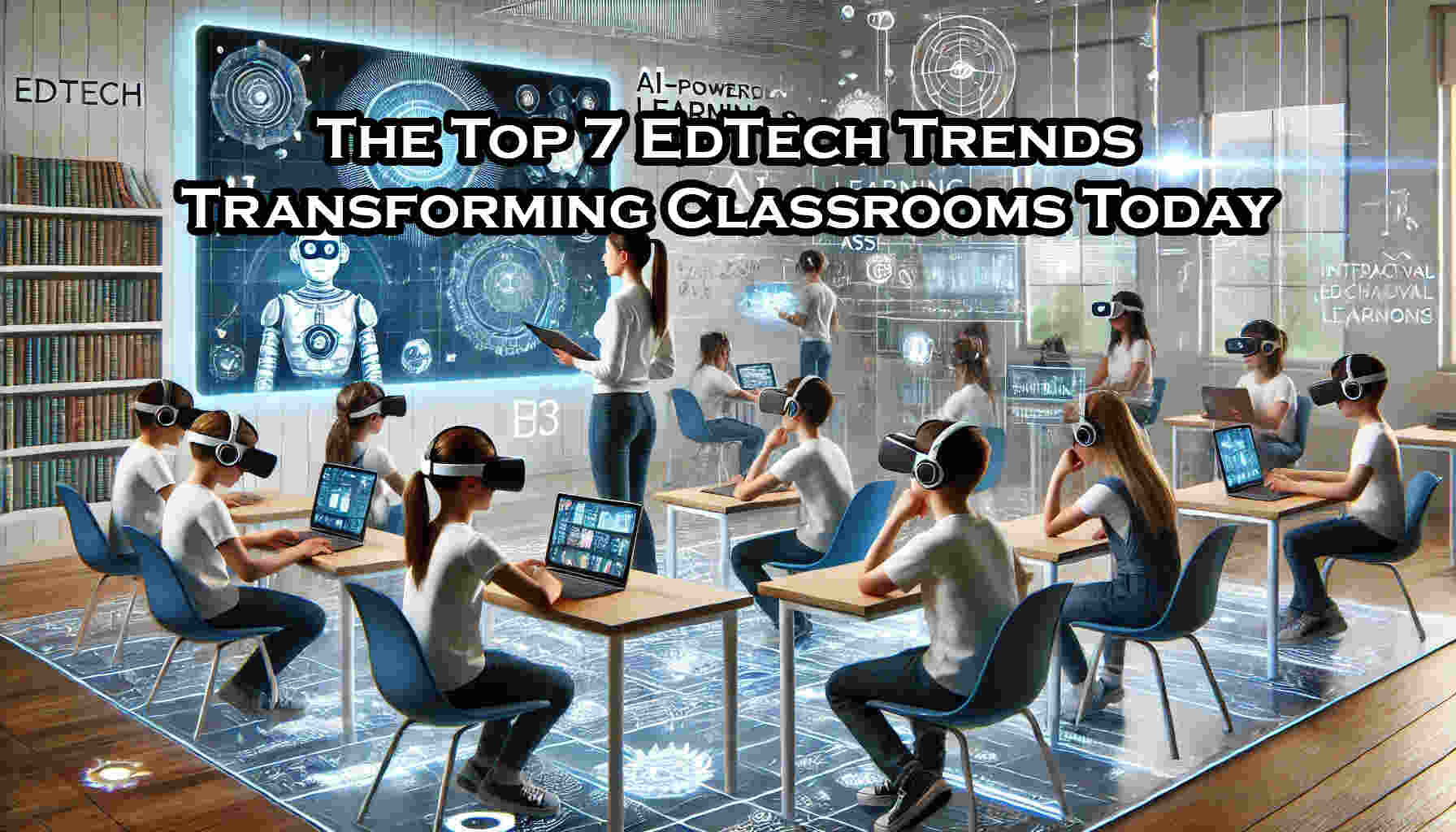Education is undergoing massive transformation supported by technology that promises to make learning fun, affirmative and personalized. Today, classrooms are changing like never before with smart AI tutors, virtual adventure; and all. Let’s take a dive into the seven largest EdTech trends that are changing the ways in which students learn and teachers teach.
1. Personalized Learning using Artificial Intelligence (AI)
The AI is taking a great role in the customizing of education to suit the needs of each student. These smart systems analyze, monitor and determine where students excel and find their weak spots and then modify their learning pathways.
🤖 The Adaptive Learning tools are tailored to meet individual students’ needs, adjusting according to how a student performs expresses, and feels.
🤖 AI Chatbots & Digital Tutors provide instant homework solutions and real time answers.
🤖 Auto-Grading Software is beneficial to teachers as it saves them time in checking assignments and give feedback immediately.
As this tech continues to evolve, it will be learning, for every student that feels even more tailored and supportive.
2. Gamification and Learning Through Games
Gamification brings games to the classroom and keeps students motivated and interested. Game-based learning goes further by actually using video games to teach lessons in a fun and interactive manner.
🤖 Such apps as Kahoot! and Duolingo provide learners with points, badges and leaderboard based ranking.
🤖 Educational Games educate with storylines and challenges such as an exploration of history and code puzzles.
🤖Puzzle-Based Learning and Classroom Escape Rooms make lessons a group adventure.
Introducing games to learning makes it easier to maintain student interest in their studies.
3. Augmented and Virtual Reality (AR/VR)
AR and VR are amking the lessons alive by allowing the students to experience the environment in the 3D world as opposed to just reading in a textbook.
🤖 With virtual field trips, students can explore outer space, ancient ruins even inside the human body without being in the classroom.
🤖 Interactives AR Textbooks employ animation and 3D model to enhance learning.
🤖 Virtual Science Labs provide a safe, practical hands-on opportunity to explore and practice technical skills.
These tools make abstract concepts feel real and easier to understand.
4. Online and Blended Learning Models
Remote learning tools have increased the flexibility in learning allowing students to learn anywhere. Online and hybrid set up are increasingly becoming common.
🤖 The likes of Google Classroom and Moodle structure lessons, assignments and monitor the progress of a student.
🤖 Video Calls and Virtual Classrooms ensure students don’t get left behind regardless of their location.
🤖 Asynchronous Learning provides students with the choice to study on their time.
This flexibility makes education more flexible for all types of learning.
5. Tech For Accessibility and Inclusivity Promotion.
EdTech is making classrooms not quire a one size fit all environment due to the provision of support for students of different learning needs.
🤖 Speech-to-text and text-to-speech software helps in reading and writing struggle.
🤖 AI Captioning and Transcription Tools enable students who are deaf or hard of hearing.
🤖 Customizable Learning Interfaces give the ability to alter text size, background color, etc. for increased clarity.
These tools guarantee that every student can succeed regardless of his or her ability.
6. Blockchain for Safe and Verified Credentials
Now, blockchain is being utilized to safely track and share data on academic records, making it tamper-proof and easier to verify.
🤖 Digital Certificates and Diplomas make it simple for students to demonstrate their qualifications to their employers.
🤖 Transparent Record Keeping provides proper Attendance & Grading Tracking.
🤖 Fraud Detection Tools minimize the chances of false degrees and fake credentials.
This technology provides another level of trust and efficiency in educational accomplishments.
7. STEM and Robotics in Classroom
As the careers in tech are increasing, schools are concentrating more on STEM and robotics education in order to prepare the students for the coming days.
🤖 Robotics Kits such as Arduino and LEGO Mindstorms gives students the opportunity to experience the field of engineering through their own hands-on activities.
🤖 Coding Tools such as Scratch and Python courses teach programming at a young age.
🤖 STEM Competitions and Hackathons ignite creativity and critical thinking abilities.
These experiences set the basis for future jobs in science and technology.
Final Thoughts
EdTech is not a simple thing of putting cool new toys in the classroom, it’s about rebalancing the ways we do teach and learn. With such trends, education is taking on dynamic, personalized, and inclusive steps. The classroom of the future is now being built right under our noses and is defined by rapid tech growth.
